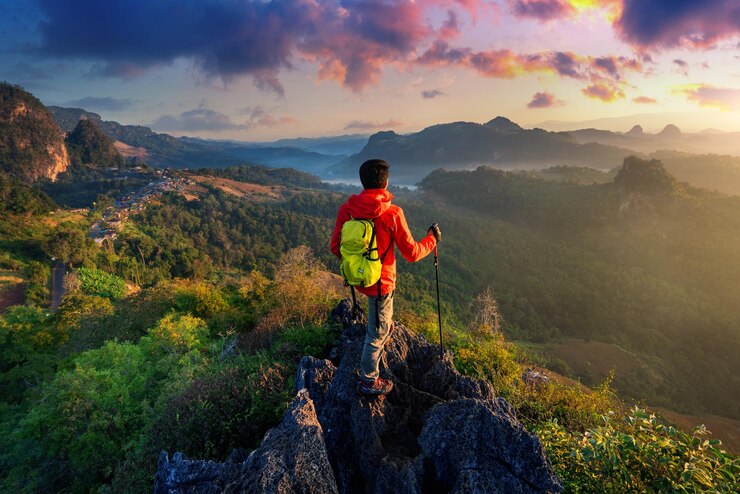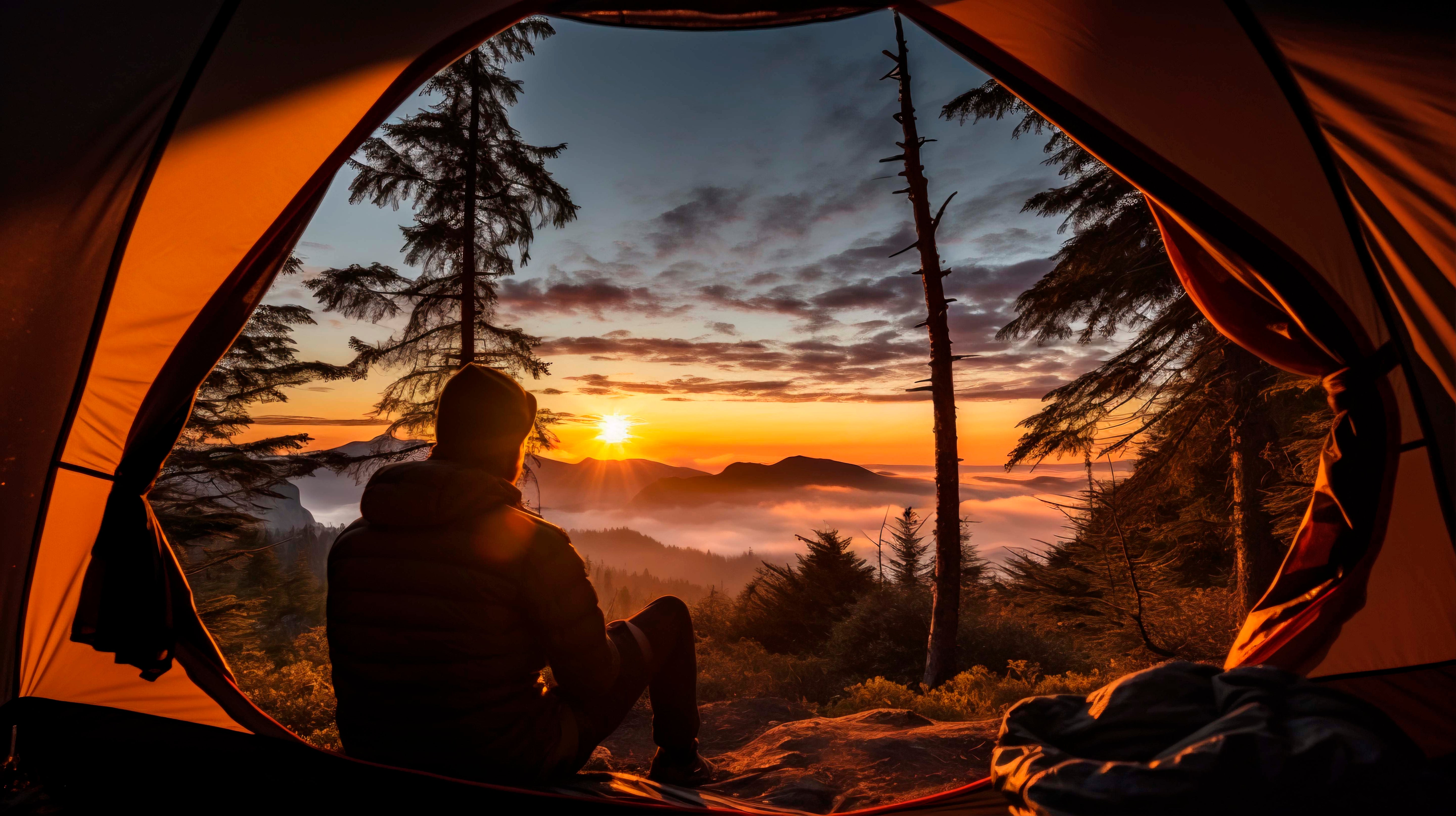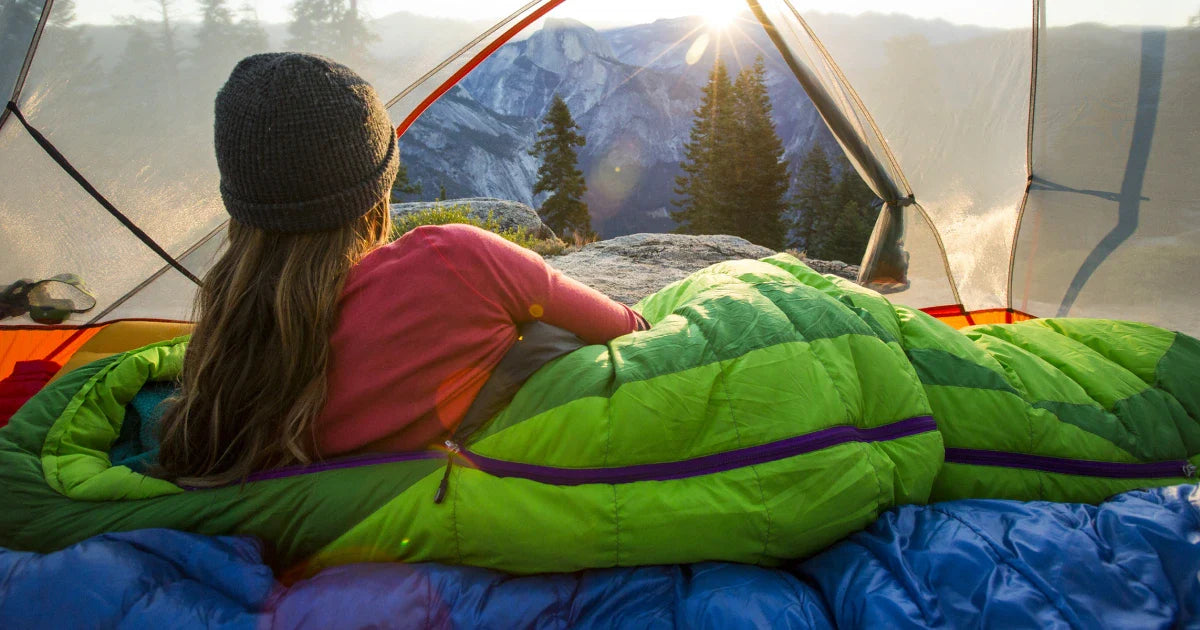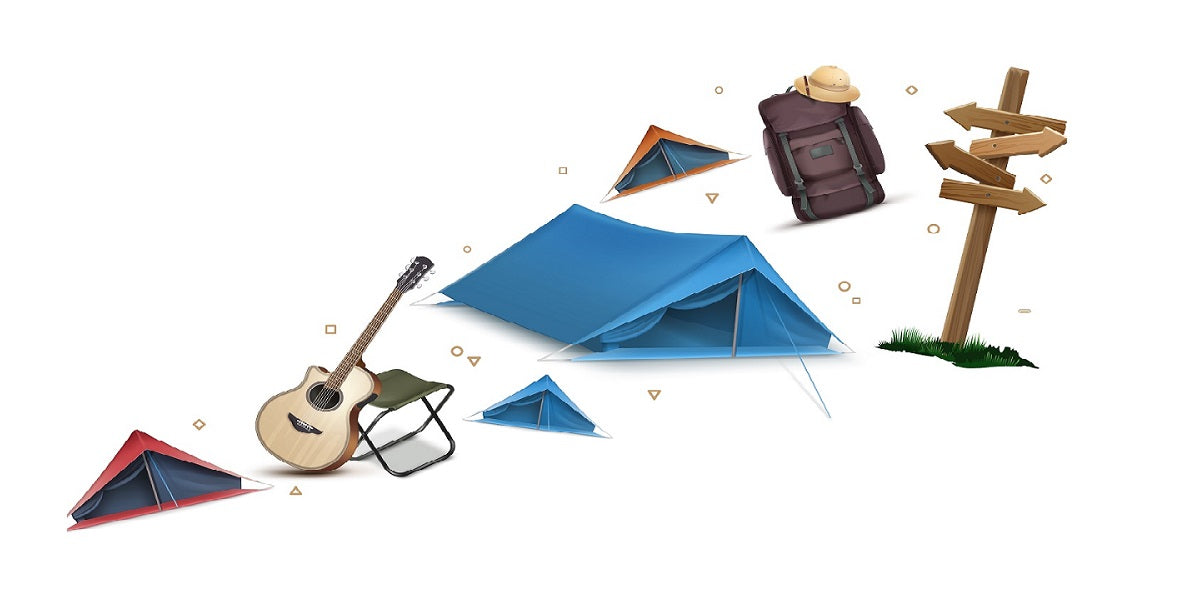
Best Trekking and Hiking Sites in the United States
The United States is home to some of the world's most scenic and diverse hiking trails. Whether you're an experienced trekker or a beginner, there's something for everyone. Here, we delve into 15 of the best trekking and hiking sites across the country, each offering unique experiences and unforgettable views.
- Appalachian Trail (AT)
Detail
The Appalachian Trail is one of the longest continuous hiking trails in the world, stretching approximately 2,190 miles from Springer Mountain in Georgia to Mount Katahdin in Maine. The trail meanders through 14 states, offering diverse landscapes that include lush forests, open meadows, rugged mountains, and picturesque rivers.
Activities
Hiking, camping, wildlife watching, and visiting historical sites along the trail.
Pros
- Diverse Landscapes: Experience a variety of ecosystems and terrains.
- Community and Culture: Strong hiker community and numerous trail towns.
- Accessibility: Many entry points allow for flexibility in hike length.
Cons
- Crowds: Popular sections can be crowded during peak seasons.
- Length: Completing the entire trail is a significant time commitment.
- Weather: Unpredictable weather can pose challenges.
Safety Tips
- Prepare for Weather: Be ready for sudden weather changes.
- Stay Hydrated: Carry sufficient water and a filtration system.
- Wildlife Awareness: Know how to handle encounters with wildlife.
- Pacific Crest Trail (PCT)
Detail
The Pacific Crest Trail spans 2,650 miles from the Mexican border in California to the Canadian border in Washington. The trail traverses diverse landscapes including deserts, forests, and high alpine regions, providing hikers with breathtaking views and challenging terrain.
Activities
Hiking, camping, backpacking, and wildlife viewing.
Pros
- Scenic Diversity: Varied landscapes from deserts to alpine peaks.
- Stunning Views: Panoramic vistas of the Sierra Nevada and Cascade Range.
- Well-Maintained: Good trail markings and numerous resources for planning.
Cons
- Logistics: Remote sections can complicate resupply and access.
- Physical Demands: Requires excellent physical condition.
- Permits: Obtaining necessary permits can be competitive.
Safety Tips
- Altitude Acclimatization: Gradually acclimate to higher elevations.
- Navigation Skills: Use maps, compass, and GPS.
- Fire Safety: Be mindful of fire regulations and risks.
- John Muir Trail (JMT)
Detail
The John Muir Trail is a 211-mile trail in California that runs from Yosemite Valley to Mount Whitney, the highest peak in the contiguous United States. Named after the famous naturalist John Muir, this trail is renowned for its stunning scenery and challenging terrain.
Activities
Hiking, backpacking, camping, and photography.
Pros
- Iconic Scenery: Spectacular views of the Sierra Nevada.
- Relative Isolation: Less crowded than other major trails.
- High-Quality Trail: Well-maintained with clear signage.
Cons
- Permits Required: Permits are difficult to obtain.
- Strenuous Sections: Includes significant elevation gains.
- Limited Access Points: Fewer entry and exit points.
Safety Tips
- Bear Precautions: Use bear-proof containers and follow guidelines.
- Weather Preparedness: Be ready for sudden changes, especially thunderstorms.
- Physical Preparation: Train adequately for strenuous hikes.
- Grand Canyon Rim-to-Rim
Detail
The Grand Canyon Rim-to-Rim hike is a challenging trek that takes hikers from the North Rim to the South Rim of the Grand Canyon, covering approximately 24 miles. This hike offers unparalleled views of the canyon's geological formations and vast landscapes.
Activities
Hiking, camping, photography, and exploring geological formations.
Pros
- Unique Experience: Cross one of the world's natural wonders.
- Geological Wonders: Witness millions of years of Earth's history.
- Support Facilities:Resthouses and water stations are available.
Cons
- Heat: Extreme temperatures can be dangerous.
- Crowds: Popular trails can be crowded.
- Logistics: Transportation between rims requires planning.
Safety Tips
- Hydration: Drink water regularly to prevent dehydration.
- Heat Precautions: Avoid hiking during the hottest parts of the day.
- Physical Fitness: Ensure you're fit for the strenuous hike.

- Zion National Park – The Narrows
Detail
The Narrows in Zion National Park is a unique hike that involves wading through the Virgin River as it flows through a deep, narrow canyon. This 16-mile round-trip hike offers stunning views of towering canyon walls and serene riverbanks.
Activities
Hiking, wading, photography, and exploring slot canyons.
Pros
- Unique Terrain: Hike through a river within a narrow canyon.
- Adventure: Involves wading and sometimes swimming.
- Scenic Beauty: Stunning rock formations and riverbanks.
Cons
- Water Levels: High water levels can make the hike dangerous.
- Permits: Required for top-down hikes.
- Weather Dependency: Flash floods are a risk.
Safety Tips
- Check Conditions: Verify water levels and weather forecasts.
- Proper Footwear: Use water shoes or sturdy sandals.
- Flash Flood Awareness: Know the signs and have an emergency plan.
- Mount Rainier – Wonderland Trail
Detail
The Wonderland Trail is a 93-mile loop around Mount Rainier in Washington State. This trail offers diverse scenery, from lush forests to alpine meadows, and provides hikers with breathtaking views of Mount Rainier and its glaciers.
Activities
Hiking, backpacking, camping, and wildlife viewing.
Pros
- Circular Route: Offers varied scenery and ecosystems.
- Wildflowers: Spectacular displays in summer.
- Challenging Terrain: Rewarding for experienced hikers.
Cons
- Permits: Difficult to obtain due to high demand.
- Weather Variability: Rapid weather changes, including snow.
- Elevation Gain: Significant elevation changes.
Safety Tips
- Weather Preparedness: Be ready for all weather conditions.
- Navigation: Carry a good map and know the route.
- Wildlife Precautions: Store food properly to avoid attracting animals.
- Yosemite National Park – Half Dome
Detail
Half Dome is one of Yosemite's most iconic landmarks. The hike to its summit is about 16 miles round-trip, involving a steep ascent with cables in the final section. The reward is a panoramic view of Yosemite Valley and the surrounding wilderness.
Activities
Hiking, rock scrambling, photography, and enjoying panoramic views.
Pros
- Iconic Landmark: A bucket-list achievement for many hikers.
- Stunning Views: Panoramic vistas from the summit.
- Variety: Mix of flat trails, steep ascents, and rock scrambling.
Cons
- Permits: Required and difficult to obtain.
- Crowds: Popular and often crowded.
- Physical Demands: Final ascent involves cables.
Safety Tips
- Cables: Use provided cables for safety.
- Weather: Avoid the hike in bad weather.
- Preparation: Train for endurance and strength.
- Rocky Mountain National Park – Longs Peak
Detail
Longs Peak is a prominent 14,259-foot peak in Colorado's Rocky Mountain National Park. The hike to the summit via the Keyhole Route is a challenging 15-mile round-trip trek, offering spectacular alpine scenery and a sense of accomplishment.
Activities
Hiking, climbing, wildlife viewing, and alpine photography.
Pros
- 14er Challenge: A significant achievement for peak baggers.
- Alpine Scenery: Stunning views of the Rockies.
- Wildlife: Opportunities to see elk, bighorn sheep, and more.
Cons
- Strenuous Hike: Requires excellent physical condition.
- Weather Hazards: Rapid weather changes.
- Technical Sections: Keyhole Route is technical and exposed.
Safety Tips
- Early Start: Begin early to avoid afternoon storms.
- Acclimatization: Spend time at higher elevations beforehand.
- Navigation: Know the route well, especially the Keyhole section.
- Bryce Canyon National Park – Fairyland Loop
Detail
The Fairyland Loop in Bryce Canyon National Park is an 8-mile trail that takes hikers through the park's famous hoodoos and colorful rock formations. This moderately difficult trail offers a quieter alternative to the more popular trails in the park.
Activities
Hiking, photography, and exploring unique rock formations.
Pros
- Unique Landscape: Experience Bryce Canyon’s hoodoos.
- Less Crowded: Quieter than other park trails.
- Moderate Difficulty: Accessible for most hikers.
Cons
- Heat: Very hot during summer months.
- Exposed Trail: Limited shade along the trail.
- Remote: Fewer facilities and support.
Safety Tips
- Sun Protection: Wear sunscreen, hat, and long sleeves.
- Water: Carry plenty of water.
- Trail Markings: Follow trail markers carefully.
- Great Smoky Mountains – Alum Cave Trail
Detail
The Alum Cave Trail is a 5.5-mile trail in Great Smoky Mountains National Park, leading to Mount LeConte. The trail features diverse ecosystems, historical landmarks, and stunning geological formations, making it a popular choice for hikers.
Activities
Hiking, wildlife viewing, and exploring historical landmarks.
Pros
- Diverse Ecosystems: Lush forests to open meadows.
- Scenic Views: Stunning vistas from Mount LeConte.
- Historical Sites: Pass by Alum Cave and Arch Rock.
Cons
- Crowds: Popular trail can be crowded.
- Humidity: High humidity in summer.
- Moderate Difficulty: May be challenging for beginners.
Safety Tips
- Proper Footwear: Wear sturdy hiking boots.
- Wildlife Precautions: Be cautious of wildlife, particularly bears.
- Trail Conditions: Be prepared for muddy and slippery sections.

- Acadia National Park – Precipice Trail
Detail
The Precipice Trail in Acadia National Park is a thrilling hike that includes iron rungs and ladders, leading to the summit of Champlain Mountain. This 2.5-mile round-trip hike offers incredible views of the Atlantic Ocean and the rugged coastline.
Activities
Hiking, climbing, wildlife viewing, and coastal photography.
Pros
- Stunning Views: Offers incredible views of the Atlantic Ocean and rugged coastline.
- Thrilling Experience: The trail includes iron rungs and ladders, making for an adventurous hike.
- Compact Park: Easy access to multiple trails and scenic spots within the park.
Cons
- Technical Sections: Not suitable for those with a fear of heights.
- Seasonal Access: Often closed in spring and early summer due to nesting peregrine falcons.
- Crowds: Can be crowded during peak tourist season.
Safety Tips
- Climbing Skills: Be comfortable with heights and scrambling.
- Weather Conditions: Avoid the trail in wet or icy conditions.
- Peregrine Falcons: Respect trail closures to protect nesting wildlife.
- Glacier National Park – Highline Trail
Detail
The Highline Trail in Glacier National Park is a 15-mile hike that offers panoramic views of glaciers, mountains, and valleys. The trail is well-maintained and provides hikers with opportunities to see a variety of wildlife.
Activities
Hiking, wildlife viewing, photography, and exploring alpine environments.
Pros
- Panoramic Views: Spectacular views of glaciers, mountains, and valleys.
- Wildlife Viewing: Opportunities to see mountain goats, bears, and more.
- Well-Maintained: Well-marked and maintained trail.
Cons
- Crowds: Popular trail can be crowded, especially in summer.
- Limited Season: Snow can make the trail inaccessible outside of summer.
- Altitude: Some sections are at high altitudes, which can be challenging.
Safety Tips
- Bear Awareness: Carry bear spray and know how to use it.
- Weather Preparedness: Be prepared for sudden changes in weather.
- Stay on Trail: Avoid stepping off the trail to protect fragile alpine environments.
- Haleakalā National Park – Sliding Sands Trail
Detail
The Sliding Sands Trail in Haleakalā National Park is a unique hike through the volcanic landscape of Haleakalā Crater on Maui. This 11-mile round-trip trail offers stunning views of the crater and its otherworldly terrain.
Activities
Hiking, photography, and exploring volcanic landscapes.
Pros
- Unique Terrain: Hike through the otherworldly landscape of a volcanic crater.
- Stunning Sunrise: Known for incredible sunrise views from the summit.
- Isolated Beauty: Experience a sense of isolation and tranquility.
Cons
- Altitude: The trail starts at a high elevation, which can be challenging.
- Weather Variability: Weather can change rapidly, and temperatures can be cold at the summit.
- Limited Water: No water sources along the trail.
Safety Tips
- Altitude Acclimatization: Spend time at higher elevations before the hike to acclimate.
- Sun Protection: Wear sunscreen, a hat, and sunglasses to protect against strong UV rays.
- Water: Carry plenty of water, as there are no water sources on the trail.
- Olympic National Park – Hoh River Trail
Detail
The Hoh River Trail in Olympic National Park is a 17.3-mile trail that takes hikers through one of the few temperate rainforests in the United States. The trail offers lush scenery, diverse ecosystems, and opportunities for wildlife viewing.
Activities
Hiking, wildlife viewing, photography, and exploring rainforest ecosystems.
Pros
- Lush Rainforest: Hike through one of the few temperate rainforests in the U.S.
- Diverse Ecosystems: Experience a variety of landscapes, from rainforest to alpine meadows.
- Accessible: Trail is relatively flat and accessible for most hikers.
Cons
- Rain: The area is known for heavy rainfall, which can make the trail muddy and slippery.
- Bugs: Mosquitoes and other insects can be a nuisance.
- Limited Views: Dense forest can limit expansive views.
Safety Tips
- Rain Gear: Bring waterproof gear and be prepared for rain.
- Insect Repellent: Use insect repellent to protect against bugs.
- Trail Conditions: Be cautious on muddy and slippery sections of the trail.
- Denali National Park – Triple Lakes Trail
Detail
The Triple Lakes Trail in Denali National Park is a 9.5-mile trail that offers hikers stunning views of the Alaskan wilderness, including Denali, the tallest peak in North America. The trail passes by three beautiful lakes and provides opportunities for wildlife viewing.
Activities
Hiking, wildlife viewing, photography, and exploring Alaskan wilderness.
Pros
- Wild Scenery: Stunning views of Denali and the Alaskan wilderness.
- Wildlife: Opportunities to see wildlife, including moose and bears.
- Solitude: Less crowded than other trails, offering a sense of isolation.
Cons
- Remote: Limited access and facilities.
- Weather: Can be cold and wet, even in summer.
- Bears: High bear activity requires vigilance and precautions.
Safety Tips
- Bear Safety: Carry bear spray and know how to use it.
- Weather Preparedness: Be prepared for cold and wet conditions.
- Navigation: Ensure you have a detailed map and know the route well.

In Summaries
The United States offers a rich tapestry of hiking and trekking opportunities, showcasing diverse landscapes from coast to coast. Whether you're an experienced hiker seeking a challenging adventure or a beginner looking for scenic beauty, the nation's trails provide something for everyone. The Appalachian Trail and Pacific Crest Trail invite long-distance trekkers to immerse themselves in diverse ecosystems, while shorter yet equally rewarding hikes like the Narrows in Zion National Park and the Precipice Trail in Acadia National Park offer unique and thrilling experiences.
Hiking through the iconic landscapes of the Grand Canyon, Yosemite, and Mount Rainier offers breathtaking views and a sense of accomplishment. Trails such as the John Muir Trail and Wonderland Trail challenge hikers with their strenuous routes but reward them with unforgettable scenery and solitude. Meanwhile, the lush rainforests of Olympic National Park and the volcanic terrains of Haleakalā provide distinct and otherworldly hiking environments.
Safety is paramount across all these adventures, with each trail demanding specific precautions, from weather preparedness to wildlife awareness. Proper planning, preparation, and respect for nature ensure that hikers can fully enjoy the beauty and majesty of these natural wonders.
Ultimately, each trail offers a unique way to connect with nature, providing unforgettable memories and a profound appreciation for the diverse and stunning landscapes that the United States has to offer. So, lace up your hiking boots, pack your essentials, and embark on an adventure that will inspire and challenge you, leaving you with a deeper connection to the natural world.








